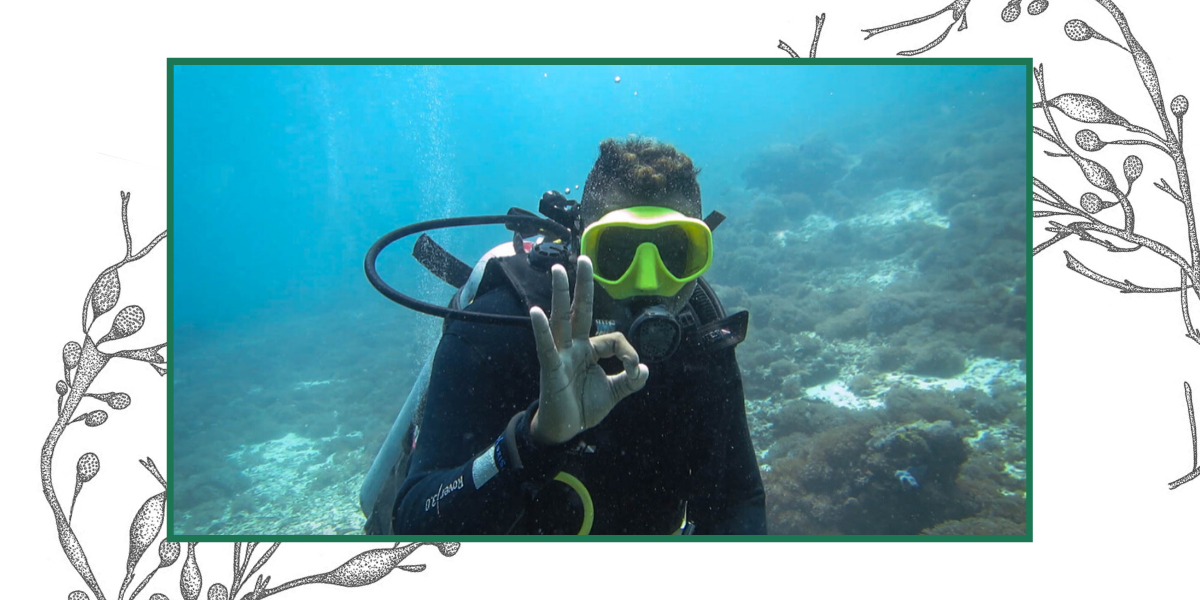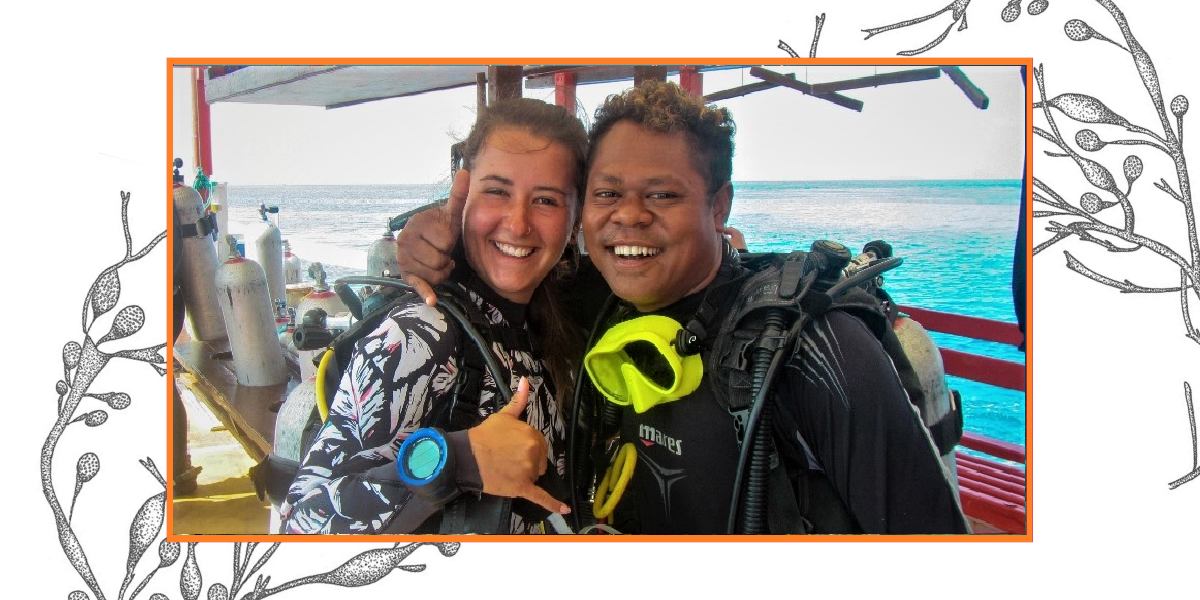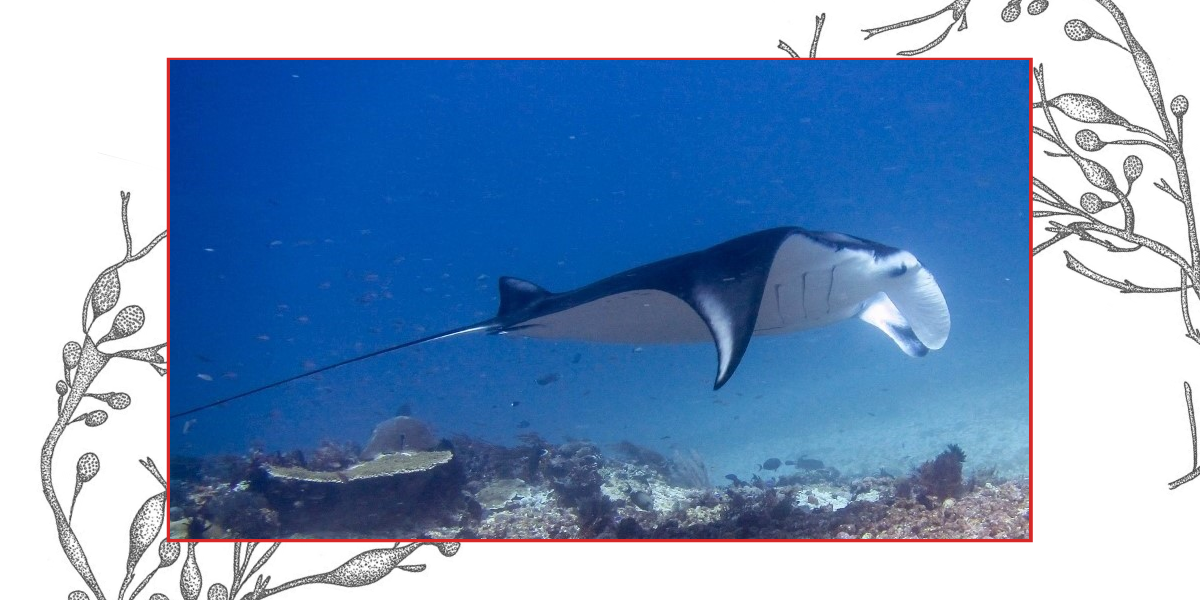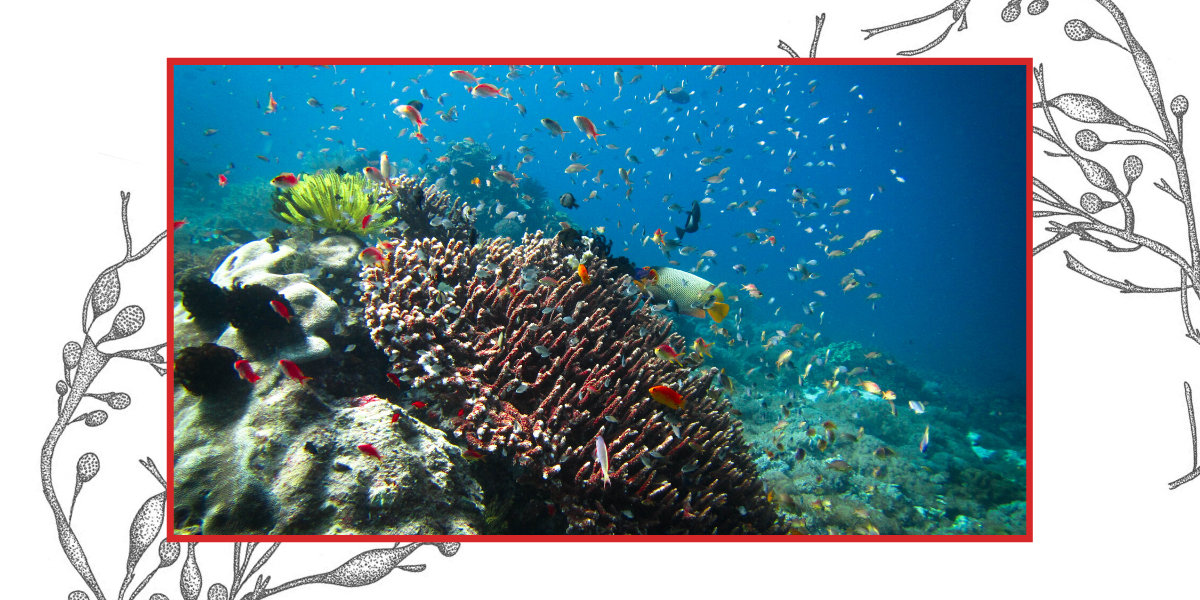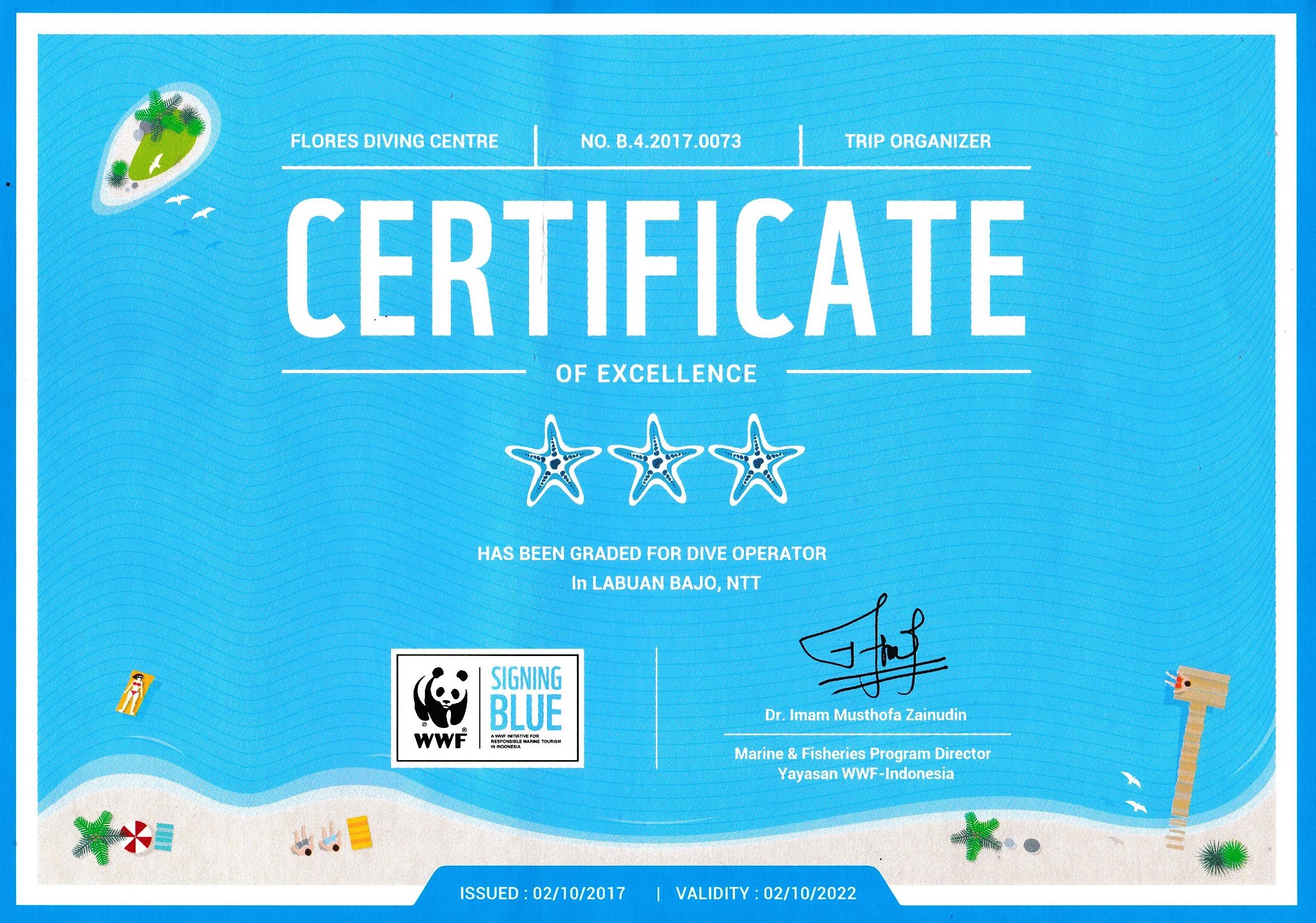Clear communication skills are needed when you are in the middle of the ocean. This is why divers use hand signals to let others know what they want to say when they can’t communicate in other ways. (It would be super cool to talk underwater though, am I right?)
Over time, scuba divers have perfected ways of improving communication signals. Scuba hand signals are now super easy to remember so neither you or your buddy will get confused to what either of you are trying to communicate.
This guide teaches you the 11 most common hand signals that you need to know before diving in Komodo. We have included a few extras on scuba hand signals that you need to know before diving in Komodo National Park.
Hand Signal 1: Okay? I’m Okay
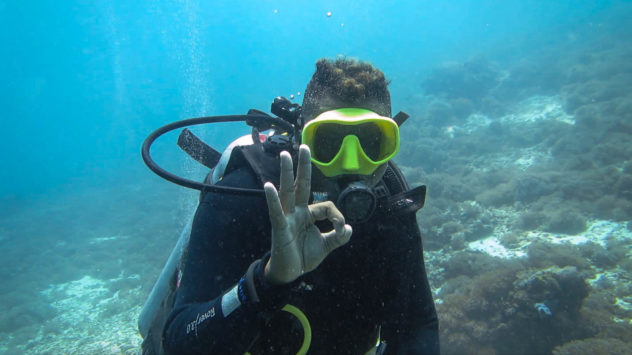
This scuba hand signal is the most common hand signal that you will come across. This sign is to ask your buddy if they are okay. If you ask ‘OK?’ and they sign ‘OK’ back, then this means that everyone is good. It’s also to ask others if they have seen a certain animal that you have pointed out. Ask ‘OK?’ and they will reply back the same if they have spotted it.
This signal is known as a positive signal, to let others know that everything is good. Be careful not to use this instead of ‘thumbs up’ which is another hand signal that we will cover later on.
Never use this hand signal if you are not ok. If there is a problem, let your buddy know with the hand signal we will talk about next.
Hand Signal 2: Not Ok / Problem
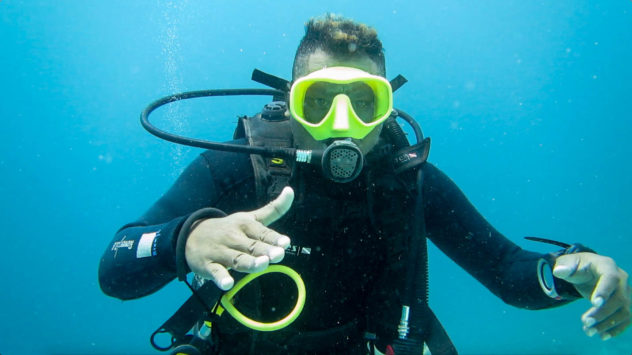
This is the hand signal that you should use when something is not OK and that you may need assistance/guidance. When describing the problem, use this hand signal, then point to whatever is causing you a problem. The most common problem when diving is equalisation. To perform this hand signal, you would signal ‘problem’ then point to your ear.
To demonstrate this hand signal, you would put your hand out flat and rock it side to side.
Hand Signal 3: Go Up
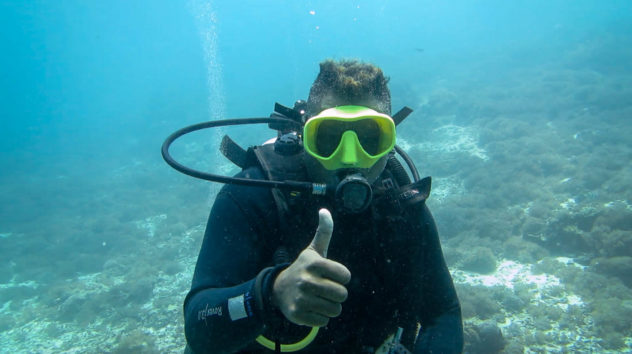
This hand signal is a ‘thumbs up’ sign. This is to signal that you want to end the dive and to slowly make your way to the surface.
If there is a problem and you want to cancel the dive (for example, if there is strong current), you would put two thumbs up, crossing your arms in a big X.
Hand Signal 4: Go Down
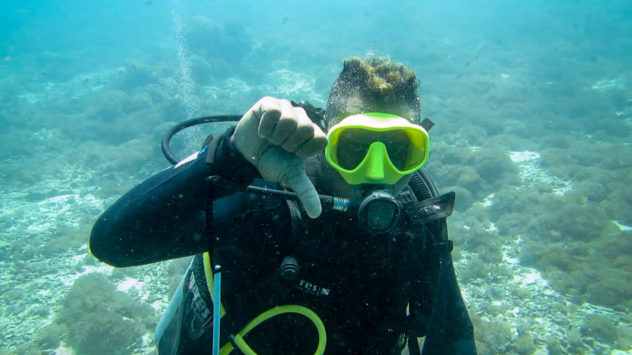
This hand signal is exactly the same as ‘go up’. Instead of putting your thumb up, you put your thumb down.
Hand Signal 5: Come Up To My Level/ Come Down To My Level
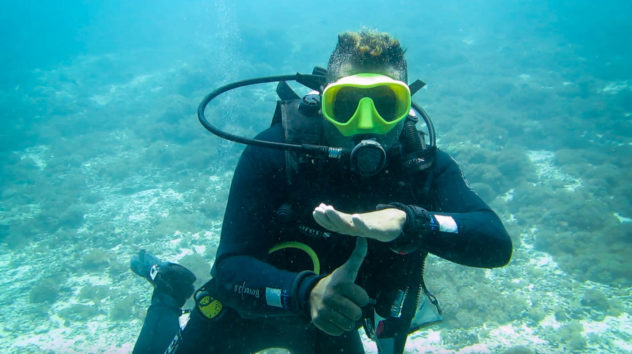
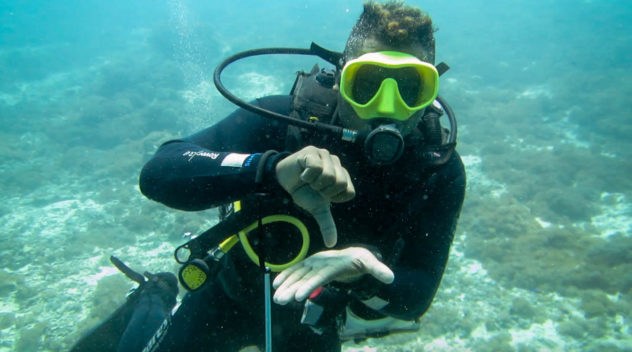
These are two Komodo diving hand signals that aren’t commonly known in the worldwide dive community. This is to tell others who are deeper / shallower than you to come up / come down to your level.
To demonstrate this, you simply make the go up / go down hand signal. Then place your other hand flat to where the thumb is pointing.
Hand Signal 6: Safety Stop
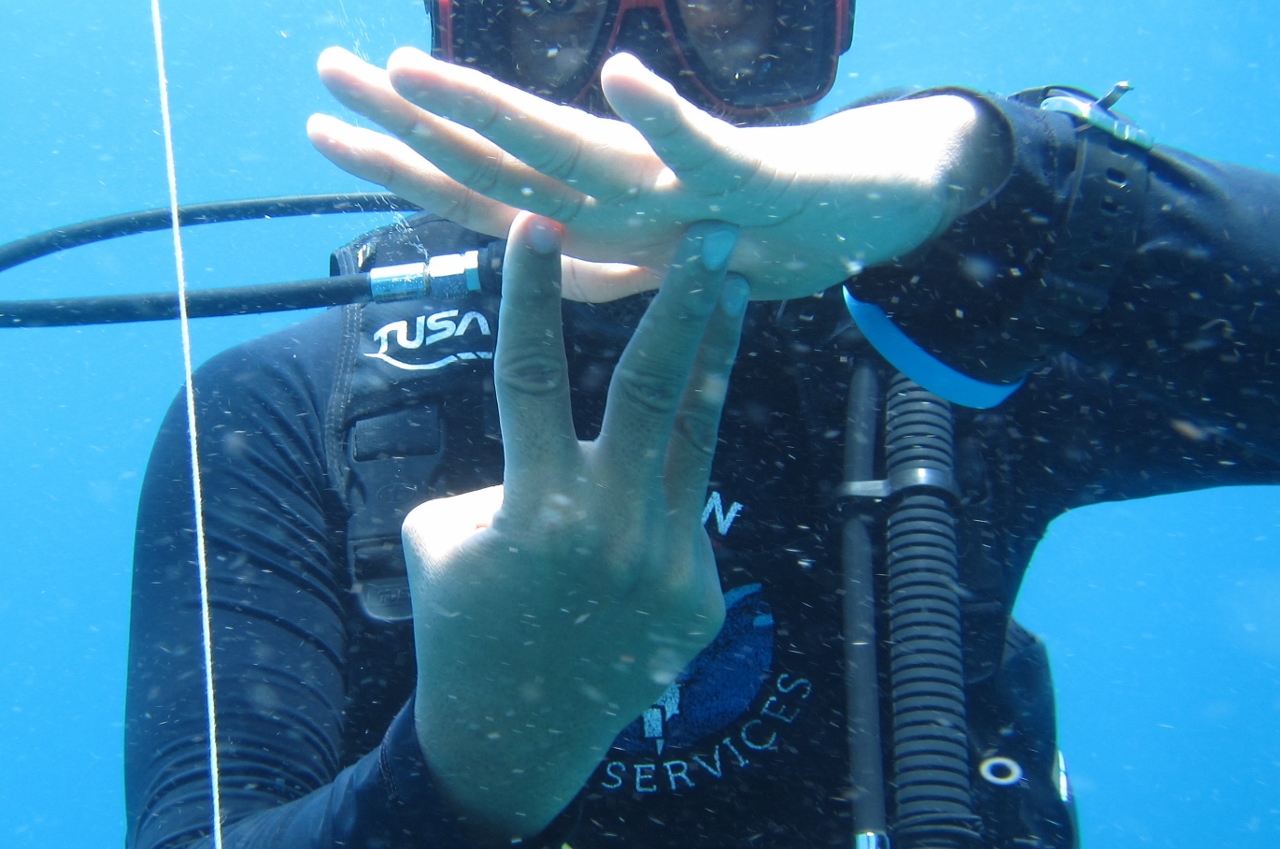
This hand signal is used to show others that it is time to do the safety stop. When you see this hand signal, you will slowly ascend to 5 meters and wait there for 3 minutes. This can be calculated on your dive computer to what level you should stop and for how long. If you do not have a dive computer, stay at the same level as your guide until told to go up.
This hand signal is shown when three fingers and placed beneath a flat hand. This indicates to stay at 5 meters for 3 minutes.
Hand Signal 7: Buddy Up
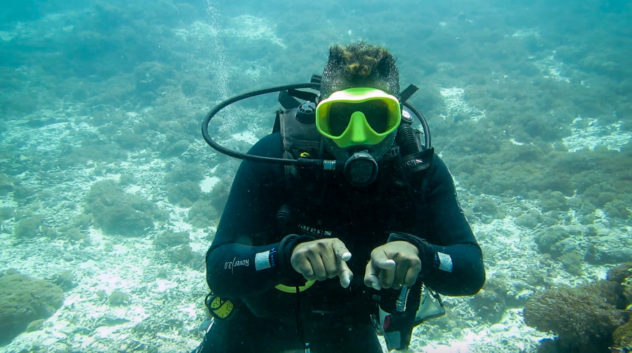
When you are too far away from your buddy or asked to go with a new buddy, your dive guide will use this hand signal.
To make this hand signal, you point out your index finger on each hand then slowly draw both fingers together, parallel to each other.
Hand Signal 8: How Much Air Do You Have Left In Your Tank?
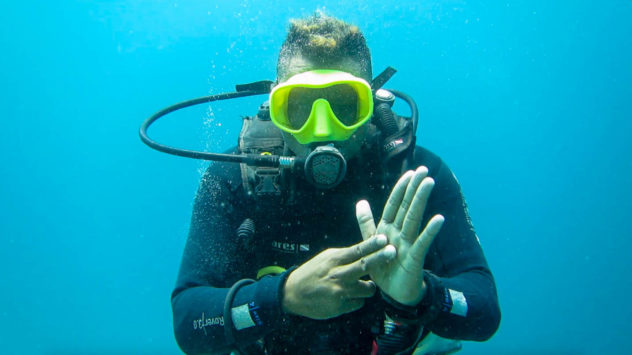
This is a hand signal that your guide will ask you a few times throughout the dive. This hand signal is to check to see if you have enough air for the planned dive. When this hand signal is demonstrated, you will look at your depth gauge and reply on how many bars you have left (shown in the next hand signal).
To make this hand signal, you would tap two fingers on the palm of your hand.
Hand Signal 9: I Have ‘X’ Amount Of Air Left In My Tank
When asked for how much air you have left in your tank, you should reply with the following hand signals. This is to let your guide know if you have enough air to complete the planned dive.
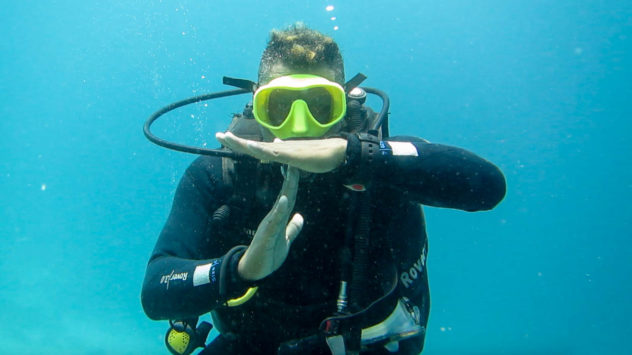
100 bar is shown by making a ‘T’ shape with both of your hands. If one hand is not free, you can make a ‘T’ shape with your arm.
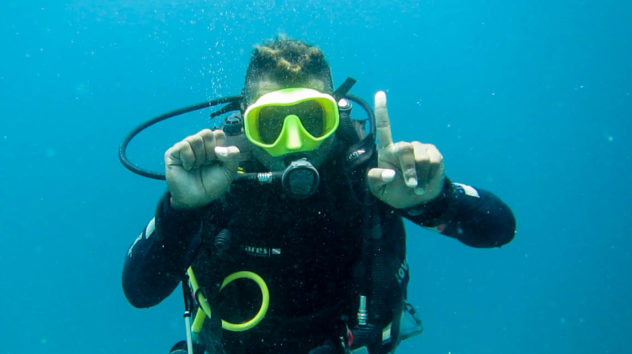
When you are counting down from 100 bar, you signal each finger as 10 bar. Be careful about signalling 60 bar, make sure to use your index finger instead of your thumb. Doing this may mistakenly tell the guide that you want to go up.
In Komodo, we follow guidelines that you should start your ascent with no less than 50 bar.
As you learned in your open water course, you should always check your tank to see if you have enough air. Do not rely on your guide to ask, as problems may occur if not checked regularly by yourself.
Hand signal 10: 50 Bar/Low On Air
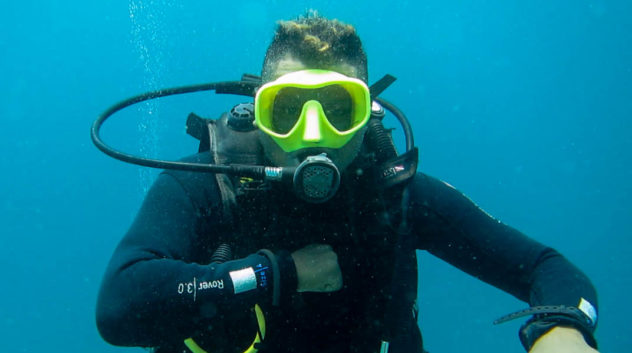
As said before, you should end the dive if your tank gets to 50 bar. Let you dive guide know by demonstrating this hand signal.
To do this, you will clench one hand making a fist shape, then bring your hand up to your chest.
Hand Signal 11: Strong Current
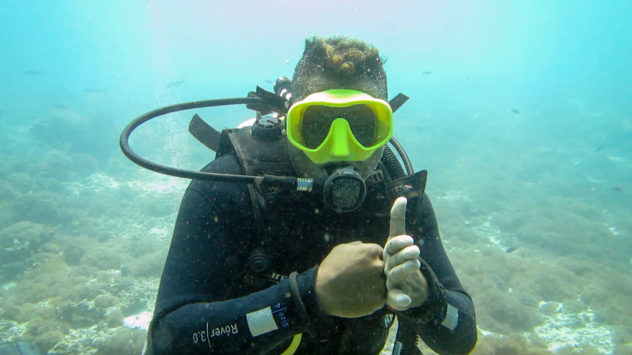
This is another regular hand signal that we use in Komodo. In Komodo, there are a lot of strong currents, so it is very important that you know this hand signal before you dive.
To make this hand signal, clench one hand into a fist. Make your other hand flat, parallel to the clenched hand and then start punching your flat hand.
When your divemaster demonstrates this hand signal, be wary of the currents around you. Always stay behind your dive guide so you do not get separated from your group in strong currents.
Final Thoughts On Hand Signals in Komodo
As we have mentioned before, it is important to know certain types of hand signals before you start a dive in Komodo. We hope that this guide has helped you learn some hand signals that you may not have known before!
Here at Flores Diving Centre, we take pride that we do thorough briefings to make sure that you are ready for the planned dive. In every one of our briefings, we will complete a refresher on the hand signals that you need to know.
We offer daily diving and snorkelling trips around Komodo National Park. Visit our website to find out more information on the trips that we offer and learn more about our dive centre.
Komodo National Park is located in the center of the Indonesian archipelago, between the islands of Flores and Sumbawa. Well worth a visit if you’re a huge fan of diverse underwater life and beautiful coral reefs.
It’s more fun with us!

